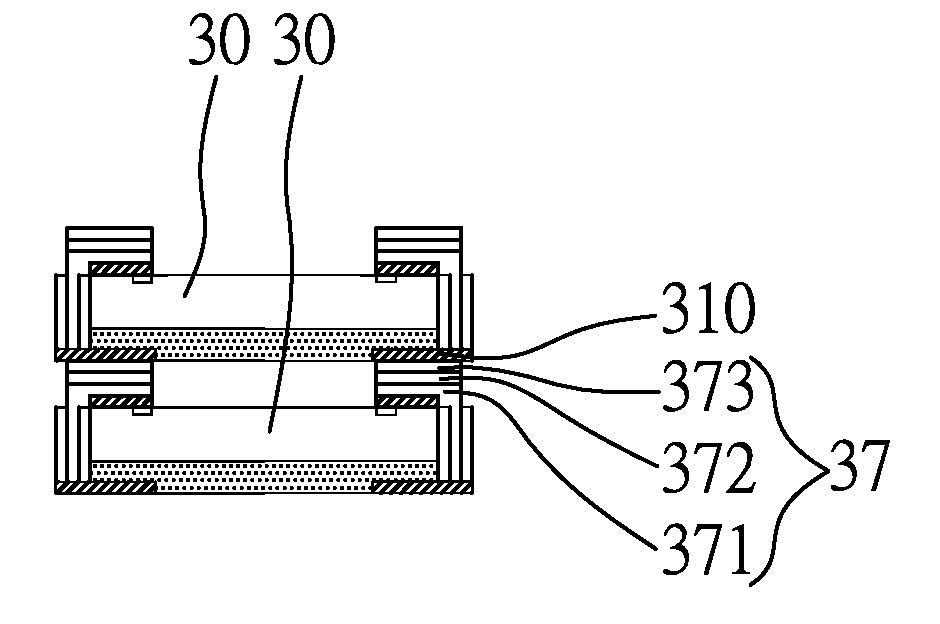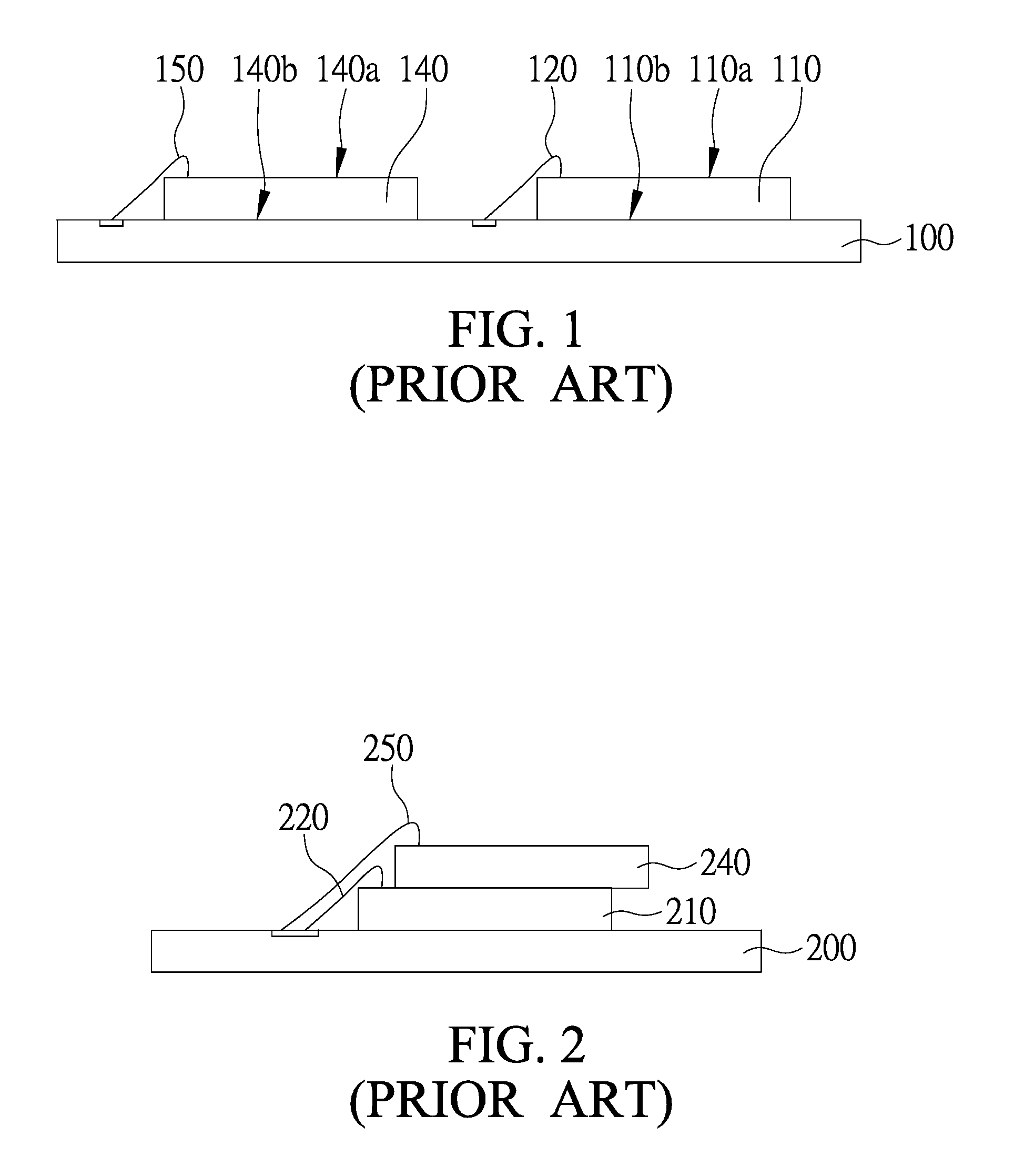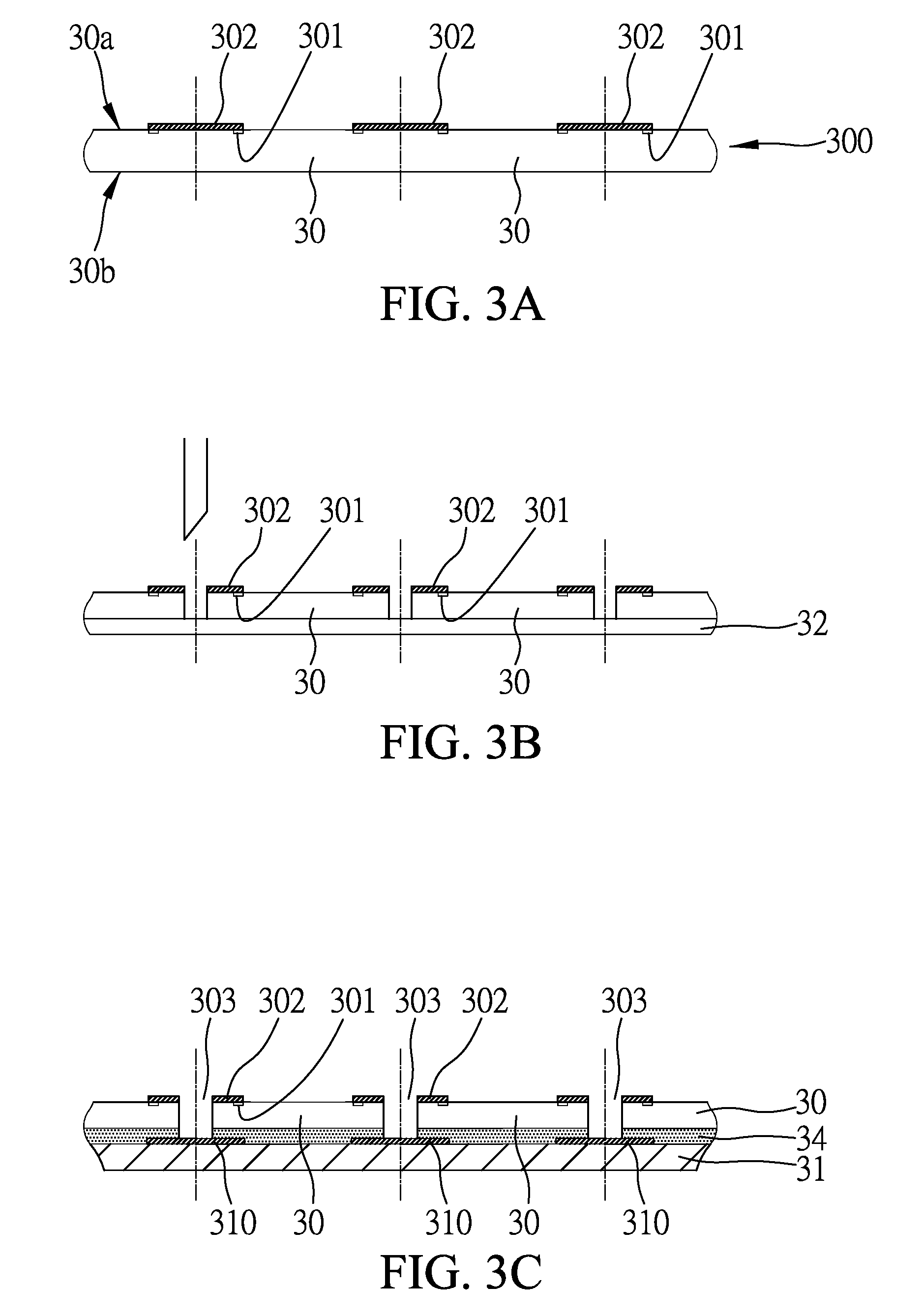Semiconductor Device and Method for Fabricating the Same
- Summary
- Abstract
- Description
- Claims
- Application Information
AI Technical Summary
Benefits of technology
Problems solved by technology
Method used
Image
Examples
first embodiment
[0038]FIGS. 3A to 3G show a semiconductor device and a method for fabricating the same according to the first embodiment of the present invention.
[0039]As shown in FIGS. 3A and 3B, a wafer 300 has a plurality of chips 30. Each of the chips 30 and the wafer 300 has an active surface 30a and an opposing non-active surface 30b, wherein a plurality of bond pads 301 are formed on the active surface 30a of each of the chips 30. After a chip probing (CP) process is performed on each of the chips 30 to determine that the chips are good dies (non-defective chips), a first metal layer 302 is formed on any adjacent two of the chips 30 and is electrically connected to the bond pads 301 on the adjacent chips. The first metal layer 302 is, for example, an under bump metallurgy (UBM) layer made of titanium / copper / nickel (Ti / Cu / Ni), titanium tungsten / gold (TiW / Au), aluminum / nickel vanadium / copper (Al / NiV / Cu), titanium / nickel vanadium / copper (Ti / NiV / Cu), titanium tungsten / nickel (TiW / Ni), titanium / c...
second embodiment
[0049]FIGS. 5A and 5B show a semiconductor device and a method for fabricating the same according to a second embodiment of the present invention. For brevity, as compared with the first embodiment, identical or similar elements are denoted with identical or similar reference numerals in the second embodiment.
[0050]The semiconductor device and its fabrication method in the second embodiment are similar to those in the first embodiment. The difference resides in that, as shown in FIG. 5A, after the second metal layers 37 are formed and the resist layer is removed, an insulating layer 38 is formed over the active surface of the chips 30 and the second metal layers 37. The insulating layer 38 can be an epoxy resin layer. Next, the carrier is removed by etching, and singulation is performed along the dielectric layer 35 to separate the chips 30. Consequently, a plurality of semiconductor devices such as thin CSP devices are formed.
[0051]As shown in FIG. 5B, a plurality of conductive ele...
third embodiment
[0053]FIGS. 7A to 7E show a semiconductor device and a method for fabricating the same according to a third embodiment of the present invention. For brevity, as compared with the above embodiments, identical or similar elements are denoted with identical or similar reference numerals in the third embodiment.
[0054]The semiconductor device and its fabrication method in the second embodiment are similar to those in the above embodiments. The difference resides in that, as shown in FIG. 7A, when a plurality of first metal layers 302 are formed on the active surfaces of the chips 30 by means of the RDL technique, the first metal layers 302 can have extending portions extended through the bond pads 301 and towards the centers of the chips 30. A plurality of extension pads 304 are formed on at ends of the extending portions of the first metal layers 302.
[0055]As shown in FIG. 7B, similar to the descriptions in the above embodiments, the chips 30 are mounted on the carrier 31 having the con...
PUM
 Login to View More
Login to View More Abstract
Description
Claims
Application Information
 Login to View More
Login to View More - R&D
- Intellectual Property
- Life Sciences
- Materials
- Tech Scout
- Unparalleled Data Quality
- Higher Quality Content
- 60% Fewer Hallucinations
Browse by: Latest US Patents, China's latest patents, Technical Efficacy Thesaurus, Application Domain, Technology Topic, Popular Technical Reports.
© 2025 PatSnap. All rights reserved.Legal|Privacy policy|Modern Slavery Act Transparency Statement|Sitemap|About US| Contact US: help@patsnap.com



